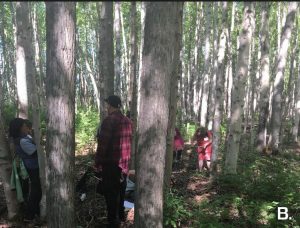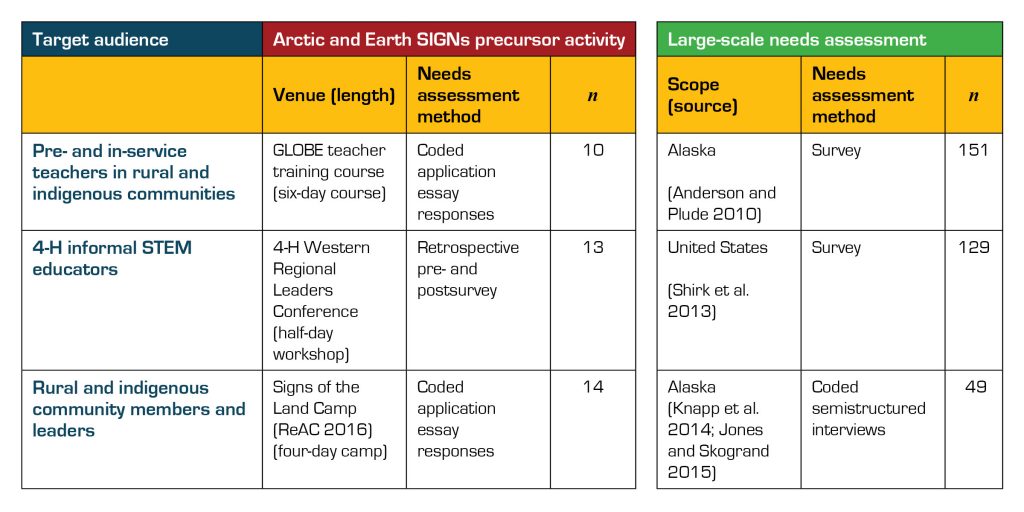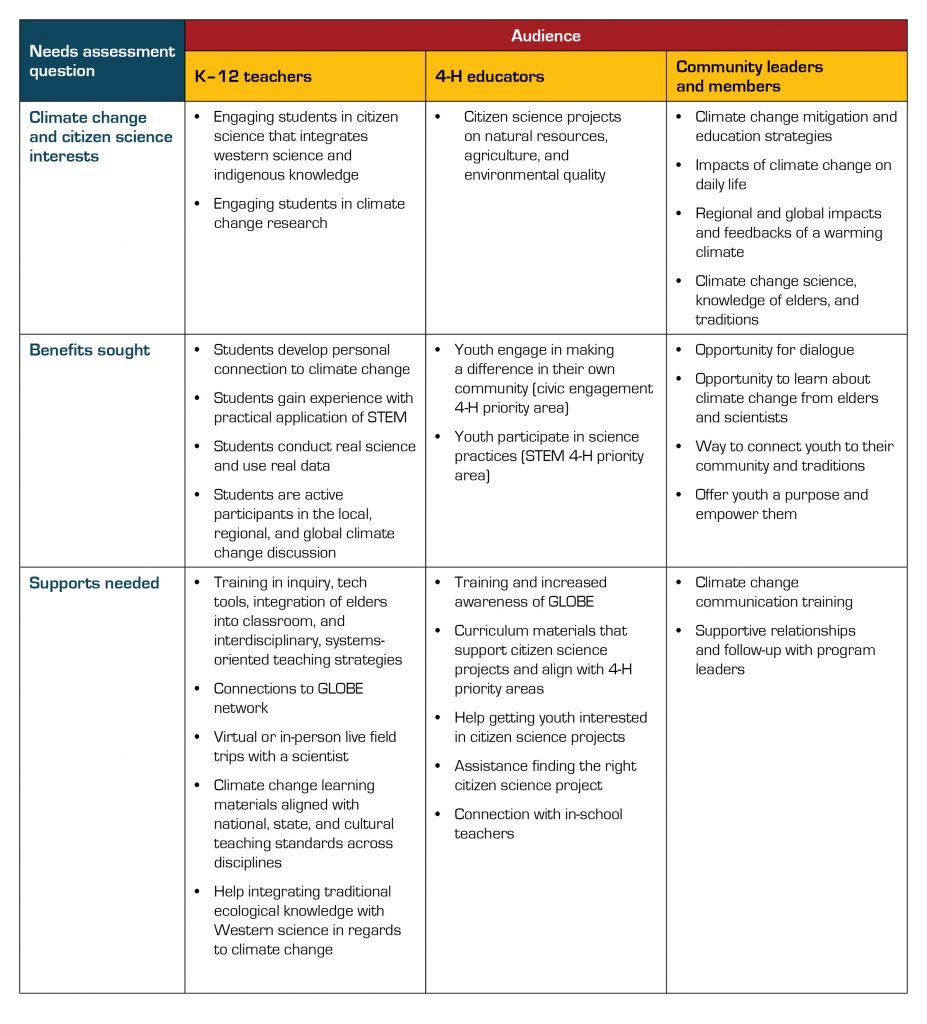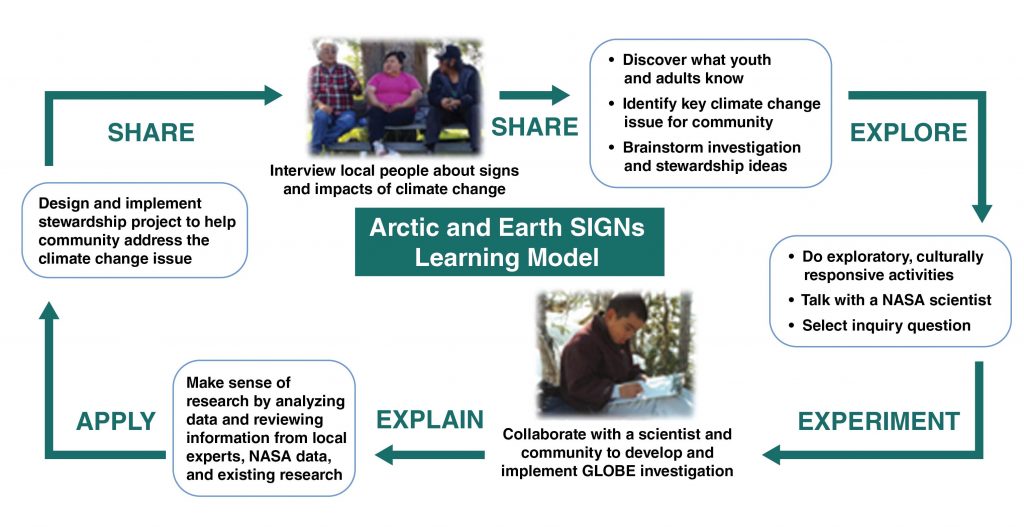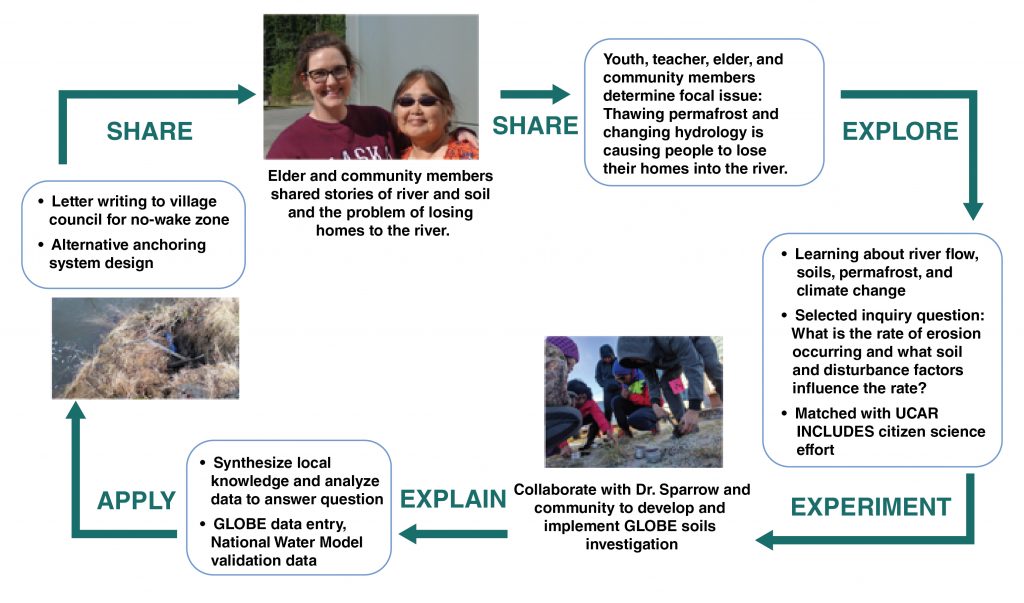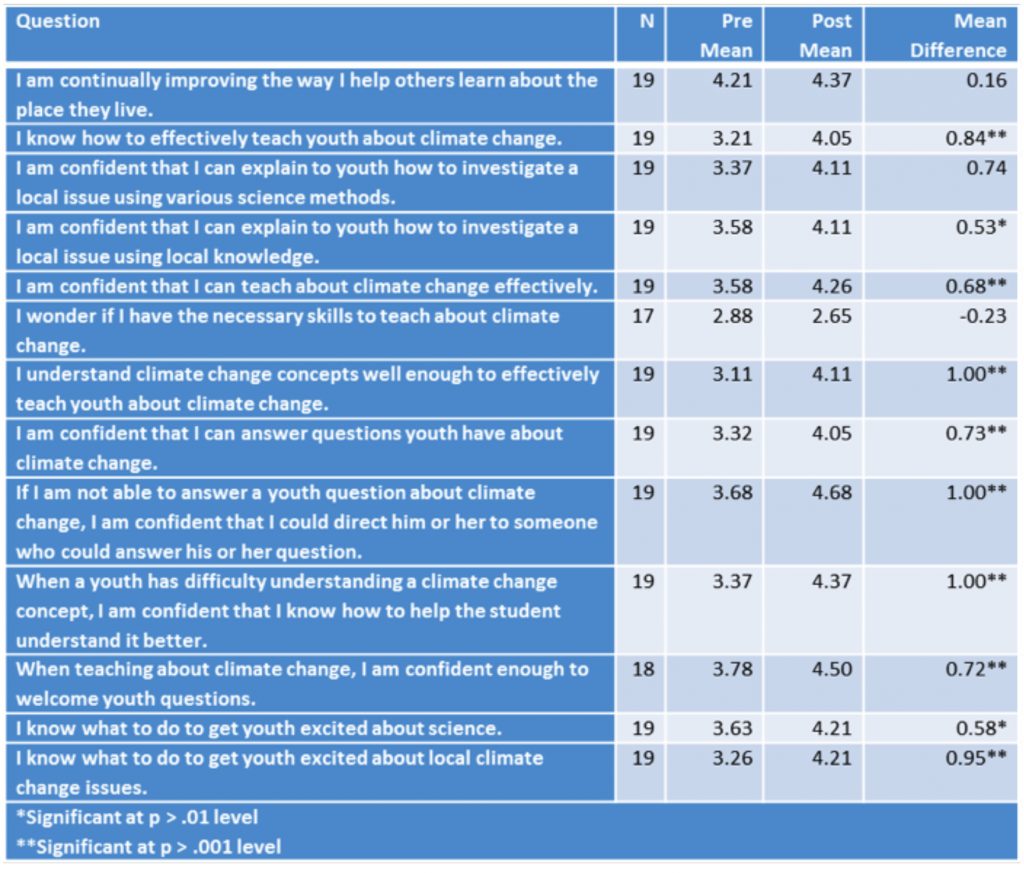Diversity and Equity
Connected Climate Change Learning Through Citizen Science
An Assessment of Priorities and Needs of Formal and Informal Educators and Community Members in Alaska
Connected Science Learning April-June 2018 (Volume 1, Issue 6)
By Katie V. Spellman, Elena B. Sparrow, Malinda J. Chase, Angela Larson, and Kelly Kealy
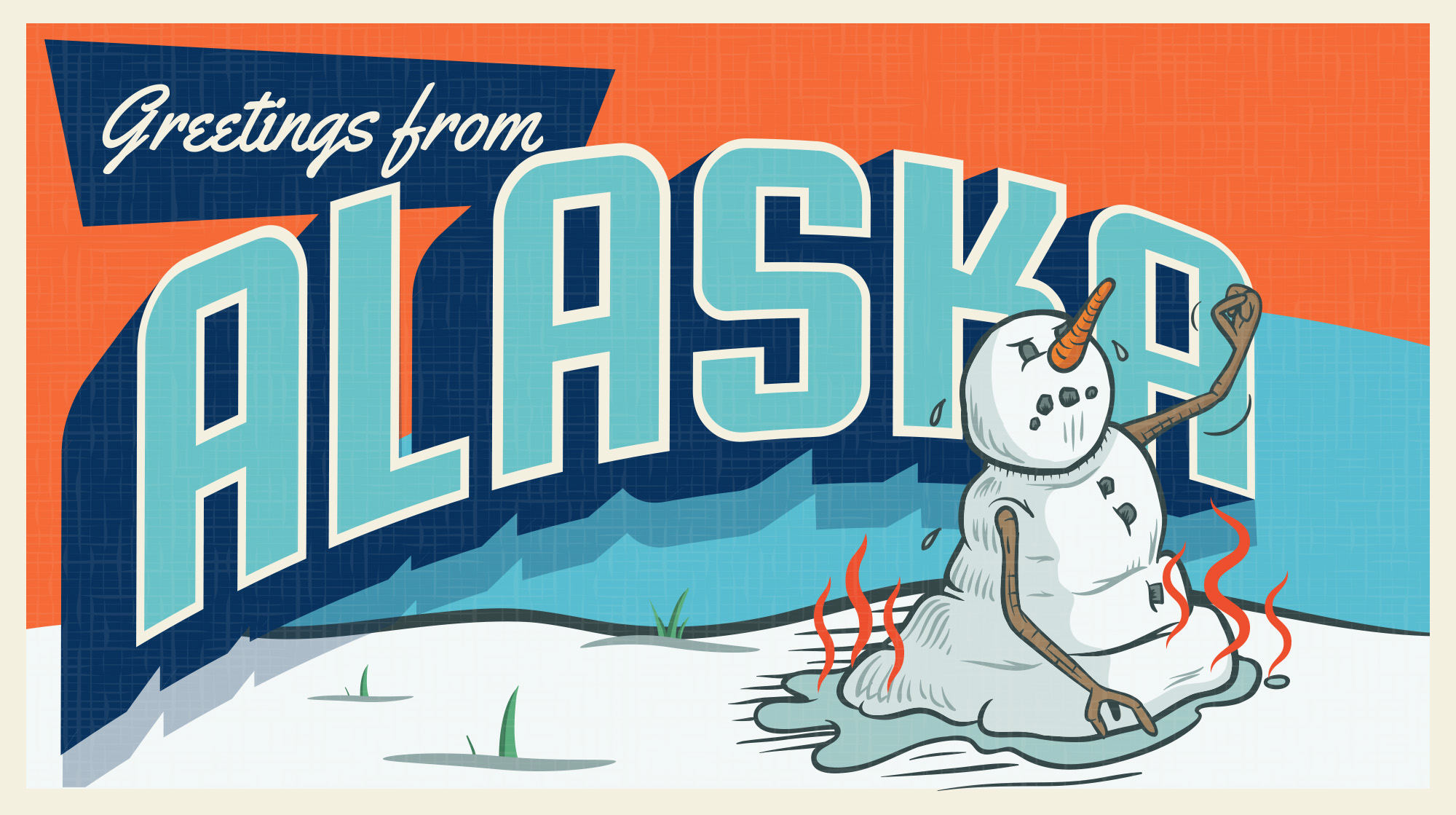
Educators in rural Alaska assessed and implemented effective strategies for Indigenous youth in rural Alaska to use GLOBE (Global Learning and Observations to Benefit the Environment), a K–12 classroom learning program, to study local changes in climate.
Citizen science offers significant potential to address pressing climate change issues in communities across multiple scales. Citizen science, often defined as a partnership between the public and professional scientists to conduct research using standardized protocols, encompasses projects that, for example, allow individuals to learn about climate change and the scientific process, or provide critical data sets for local decision-making or large-scale scientific priorities (Jordan, Ballard, and Phillips 2012). Citizen science also provides opportunities to connect in-school climate change learning to informal learning environments, and empower K–12 students, informal science learners, and community leaders to collaborate on important climate change issues. For collaboration across these diverse audiences to be effective and truly increase the capacity of a community to respond to climate change issues, the needs and priorities of each group must be identified and addressed in the design of the citizen science project.

The rate of warming in the Arctic is twice that of the rest of the world and is impacting livelihoods in Alaska (Chapin et al. 2014). In Alaska, public health, access to traditional foods, transportation, industry, infrastructure, and public works are all being affected by changing conditions, including permafrost thaw, major vegetation shifts, and altered precipitation, wildfire, and sea ice patterns (Chapin et al. 2014). A rapidly changing climate has hastened many changes in Alaska and the circumpolar north and decreased the time that northern communities have to respond to the complex problems that arise. The need to increase collaboration on climate change learning across school and community, and the need for data on pressing climate change issues, has never been greater. Citizen science collaborations are an important option for communities trying to prepare for an uncertain future.
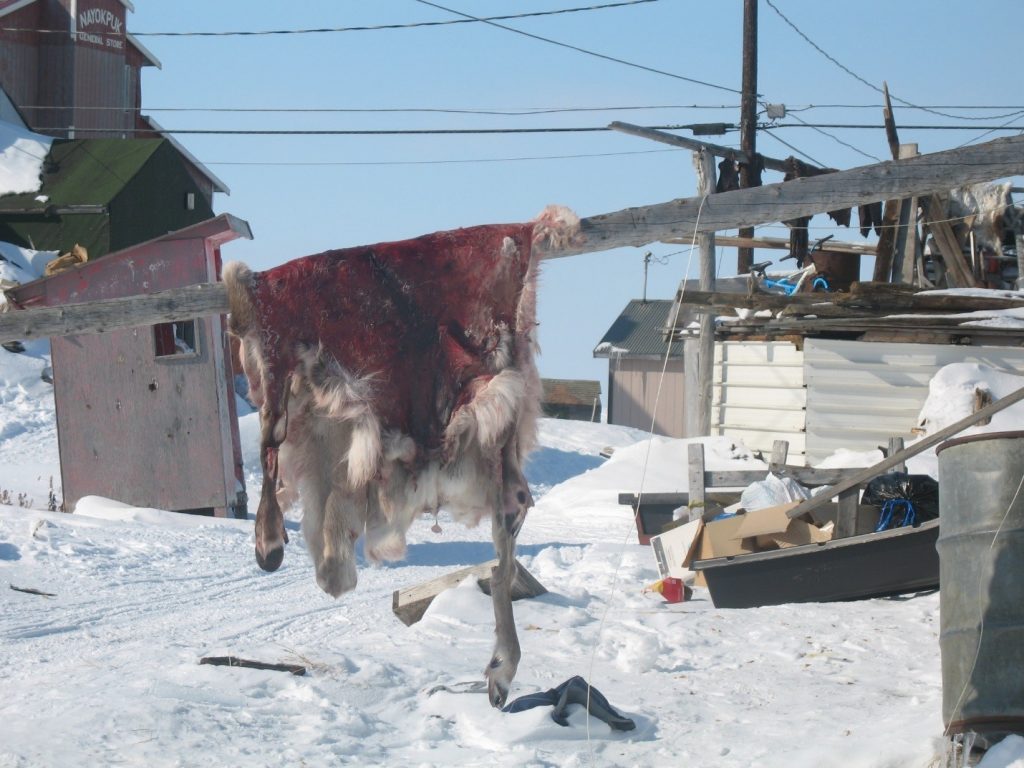
Global Learning and Observations to Benefit the Environment (GLOBE), a K–12 classroom learning program that has connected students around the world through standardized scientific observations of the environment since 1994, is responding to this need. GLOBE students from over 30,000 schools in 117 countries use 51 environmental observing protocols and standards-aligned learning activities to study science and the environment. In 2016 GLOBE formally expanded its reach out of the classroom, recruiting citizen scientist volunteers through the newly released GLOBE Observer app, in which climate change data, human health scientific priorities (e.g., cloud cover’s role in Earth’s energy balance, the spread of mosquito-borne disease), and broad engagement are prioritized. Out-of-school groups such as 4-H, a youth development program that operates community clubs, after-school clubs, and camps primarily led by volunteers for 6 million children in every U.S. state and county, is an attractive audience for the expanded GLOBE program.
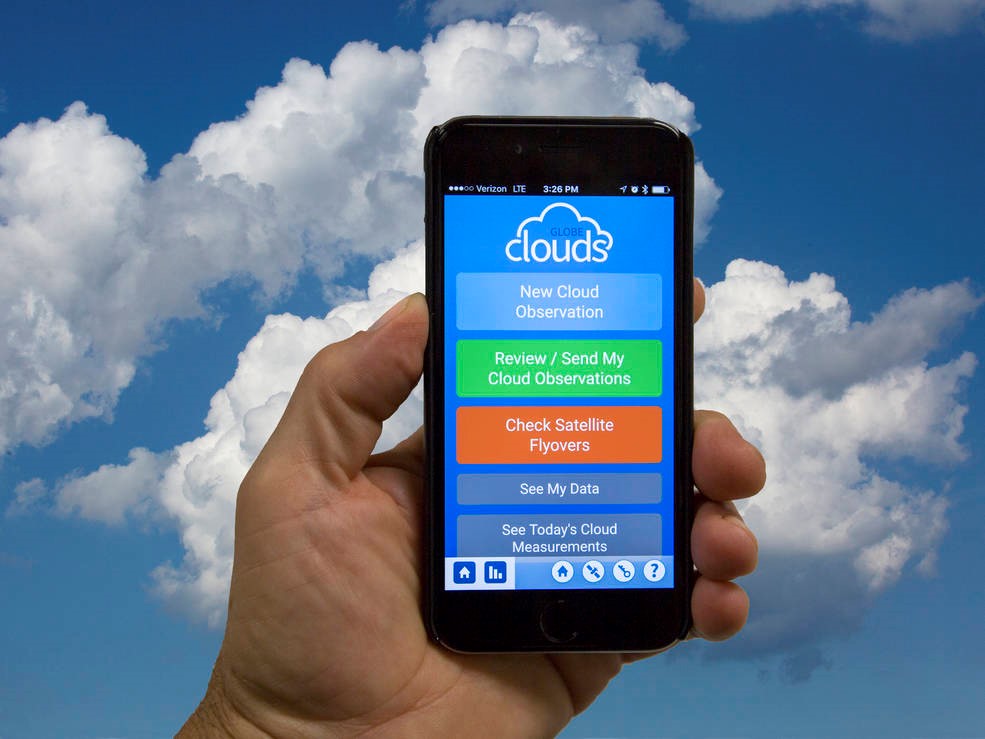
Since 1996 GLOBE Alaska at the University of Alaska Fairbanks has trained rural and urban teachers in using GLOBE. As the Alaska GLOBE program evolved, integrating Indigenous knowledge with GLOBE in classrooms became an exemplary practice for teaching and doing science in rural Alaska (Gordon, Stephens, and Sparrow 2005). The model encouraged teachers and students using GLOBE to work with elders, helping students recognize the importance of traditional ecological knowledge in climate change studies. This model was highly influenced by prior work in Indigenous education research (Kawagley 1995; Cajete 1999; Stephens 2003; Barnhart and Kawagley 2005). When GLOBE expanded the program to include participants beyond classrooms, we saw an opportunity to reach informal educators and Alaska Native community members. With very high teacher turnover rates in rural Alaska schools, (ranging from 50% to 10% across districts [Hill and Hirshberg 2013]), these new audiences were critical for allowing science education to address climate change issues. Specifically, out-of-school educators and long-term community members could potentially continue monitoring programs even if teachers moved out of the community, and partnerships between community and schools could increase the value of any data youth might collect.
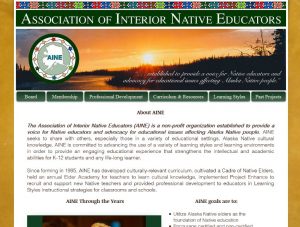
Over the same time frame, the Association of Interior Native Educators (AINE) also implemented a program that aimed to promote Indigenous knowledge, encourage learning from Alaska Native elders, focus on the Alaskan environment, and integrate these ways of learning into Alaskan teaching practice. In 1996 the AINE held its first annual camp academy, a two-week camp that was designed to foster learning partnerships between Alaska Native elders and classroom teachers. Each year, the camp concentrated on key cultural resources and practices taught by the elders. Educators then developed lesson plans and curriculum guides that highlighted what they learned from the elders and their experiences. For example, the 2001 Gaalee’ya Camp and subsequent teaching units focused on caribou. Educators learned about caribou habitat and traditional uses for the animal, including making caribou legging boots and sewing techniques such as caribou hair tufting, quillwork, and twisted caribou hair (AINE 2017). Building on this camp academy learning model, the AINE, University of Alaska Fairbanks, and Columbia University partnered to extend the model to a climate change education camp academy for Alaska Native educators, local leaders and planners, and rural community members called Signs of the Land Camp (Chase, Brunacini, and Sparrow 2016).
From these prior AINE and GLOBE Alaska experiences, our project team set out to develop an approach that would facilitate climate change learning across formal and informal learning settings. We wanted to integrate GLOBE and Indigenous knowledge and make climate change learning more relevant, meaningful, and accessible to Indigenous youth and their communities. Our project, which we call Arctic and Earth STEM Integrating GLOBE and NASA (SIGNs), aims to:
- improve instruction on climate change;
- increase scientific literacy;
- increase engagement of underrepresented youth and adults in STEM (science, technology, engineering, and math), particularly rural and Indigenous educators, community members, and youth; and
- increase capacity for communities to respond to climate change issues.
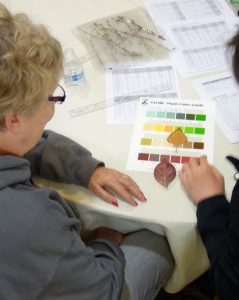
The project’s target audiences are educators and community leaders working with K–12 youth in Alaskan communities. Specifically, the educators include:
- formal K–12 teachers,
- informal educators (4-H and others), and
- community leaders seeking to work with youth to address climate change issues (e.g., elders, village or town council members, civically engaged community members).
With these goals and audiences in mind, we imagined a program that built on our prior program experiences and could be delivered in informal or formal education environments, with the following core activities:
- An educator and community member training course delivered face to face or online. It would cover climate change concepts, culturally responsive curricula, and GLOBE environmental observing protocols.
- Educator, student, community, and scientist collaboration to identify an important climate change–related challenge for the community.
- Citizen science participation aligned with the identified climate change challenges. The project would be chosen from a selection of ongoing scientific investigations that incorporate GLOBE methods.
- Learning supported by culturally responsive STEM curricula aimed at Indigenous communities.
- Stewardship action projects to add applied relevance to the STEM learning and get students actively involved in working with community leaders to address the climate change issue.
- Direct contact with NASA and Arctic scientists working on the same issue or using student data to address a larger-scale climate change question.
In this article we present the needs assessment of target audiences who participated in two GLOBE trainings for teachers and 4-H leaders, and a camp academy for Alaska Native educators and community members called Signs of the Land Camp. Our needs assessment asked the following questions:
- What issues related to climate change and citizen science are of greatest interest to these audiences?
- What benefits do these audiences seek from participation in a climate change education program rooted in GLOBE citizen science, interaction with NASA scientists and assets, and civic engagement?
- What training or support needs must we meet for the successful participation of individuals within our target audiences?
Needs assessment methods
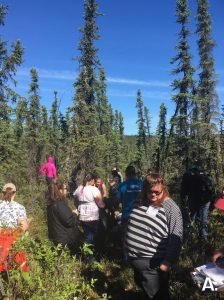 We used a twofold approach to address these questions. First, we collected data from participants in two educator workshops and a camp for community members that occurred March through June 2016, using prior program models that we thought could be combined to achieve our new program goals. Second, to look for broad trends, we supplemented our findings with insights from four previously published large-scale surveys or interview studies that addressed climate change education and citizen science in Alaska. Appendix 1 in our supplementary online material provides a detailed account of our audiences and assessment methods. Appendix 2 provides more details about the workshop and camp venues. The workshop and camp venues, data collection methods, and sample sizes are reported for each audience in Table 1.
We used a twofold approach to address these questions. First, we collected data from participants in two educator workshops and a camp for community members that occurred March through June 2016, using prior program models that we thought could be combined to achieve our new program goals. Second, to look for broad trends, we supplemented our findings with insights from four previously published large-scale surveys or interview studies that addressed climate change education and citizen science in Alaska. Appendix 1 in our supplementary online material provides a detailed account of our audiences and assessment methods. Appendix 2 provides more details about the workshop and camp venues. The workshop and camp venues, data collection methods, and sample sizes are reported for each audience in Table 1.
Educators, community members, and youth leaders from across Alaska compare vegetation, surface temperature, soil moisture, and soil temperature using GLOBE protocols in adjacent sites with (a) and without permafrost (b) present during the first Arctic and Earth SIGNs Climate Change and My Community workshop. Thawing permafrost is a major climate change concern for communities in Alaska, as it threatens infrastructure, accelerates erosion rates, and dramatically transforms habitats.
For each audience, data were collected from the participants of both the prior GLOBE workshop and Signs of the Land Camp and from a larger scale, more intensive needs assessment of the same audience for climate change education or citizen science participation.
To identify needs of our 4-H participants, we used Likert-based surveys from our program evaluations. We queried the participants on their interest and knowledge of GLOBE, climate change, and citizen science. We supplemented our limited sample with insights from a national survey of 4-H leaders on interests, needs, and benefits sought around the topic of citizen science (Shirk et al. 2013).
For both the GLOBE workshop for teachers and the Signs of the Land Camp, we assessed the interests of, benefits sought, and supports needed by the participants using the written essays in the program applications. We conducted a content analysis of the essays by coding responses and grouping them by emergent themes. The application essay questions and assessment target (in parentheses) for the GLOBE training workshop included:
1. What are your goals for joining the GLOBE and NASA project? (interests)
2. What skills, ideas, and insights do you hope to gain? (benefits and supports)
The questions for the Signs of the Land Camp application essays included:
1. What do you hope to experience or learn at the camp? (interests and benefits)
2. What questions do you have about climate change? (interests)
3. What do you think would make this camp a success? (supports)
To deepen our understanding of the climate change education interests and needs of teachers in Alaska, we used conclusions from a large-scale survey study completed by Anderson and Plude (2010). We also used insights from in-depth interviews published in Knapp et al. (2014) and Jones and Skogrand (2015) to further understand the interests and needs of Alaska Native community members for youth programs and climate change education. The scopes and sample sizes of these studies are shown in Table 1.
TABLE 1
Data sources, collection methods, and sample sizes (n) for Arctic and Earth SIGNs target audience needs assessment.
For each audience, data were collected from the participants of both the prior GLOBE workshop and Signs of the Land Camp and from a larger scale, more intensive needs assessment of the same audience for climate change education or citizen science participation.
Results
Appendix 1 in our supplementary online material provides the detailed results of our analysis. Table 2 summarizes the key findings for our needs assessment questions across the three target audiences. We used these results to offer insight into program design elements that meet the needs of in-school and out-of-school audiences collaborating on climate change learning.
TABLE 2
Summary of the key results for our needs assessment questions across the target audiences
Linking our key findings to program design
The desire to engage in real research connected to the community and make a difference with climate change is at the heart of the interests of and benefits sought from Arctic and Earth SIGNs across our target audiences. For each of our target audiences, we took the key findings of our assessment questions and determined program design elements that could be modified or improved from our precursor programs to create a new program model for reaching a broader audience across school and community.
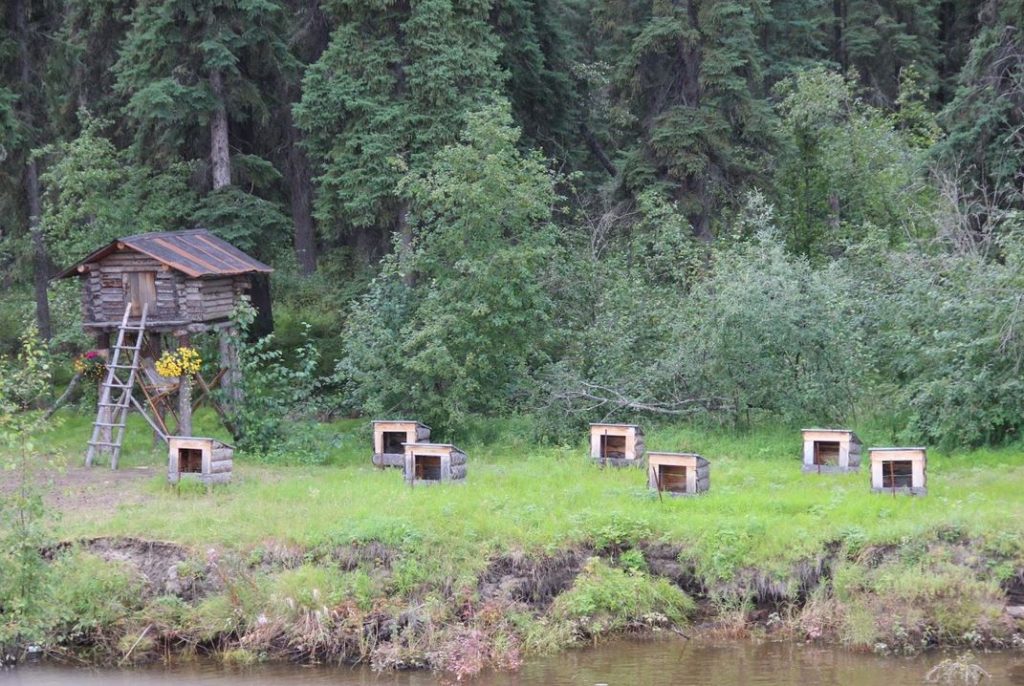
K–12 teachers
Interests
Data from the Arctic and Earth SIGNs precursor program and the statewide study show that teachers in rural and Indigenous communities are interested in teaching about climate change, citizen science, and connecting with scientists during professional development and in their classrooms. Teachers are also interested in teaching the STEM concepts underlying climate change in conjunction with community needs. These data support our program’s inclusion of student collaboration with community members and scientists on an issue of local significance.
Those who took the statewide survey and indicated that they did not teach about climate change were not interested primarily because they did not feel that the topic fit well with their required curriculum. Consequently, we have aligned all the program activities and materials to the Next Generation Science Standards (NGSS 2013) and culturally responsive curriculum standards (Alaska Native Knowledge Network 1998).
Teachers were also interested in engaging students in both Western science and Indigenous knowledge. As a result, our new program model begins with learning from and listening to elders and youth, educators, community members, scientists, and elders coidentifying an issue to which youth can contribute. The student learning continues with classroom instruction using lessons produced through earlier AINE camps. We are working to add more explicit ties in these lessons to GLOBE and climate change science.
Benefits sought
The teachers attending the GLOBE training hoped that by participating in our workshop, their students would benefit by conducting real climate change research and experiencing the relevance and application of their own data to their community and the world. This result suggested that our program design emphasize how GLOBE, NASA, and elder knowledge could be used at local and global scales to address different environmental issues, and that the program should include student action projects directly linked to the data they collect.
These teachers also hoped their students would benefit by developing a personal connection to climate change and a sense of stewardship. To address this benefit sought, we developed lessons to draw youth attention to their own observations of changes in the environment around them (link to example lesson) and developed supports to help educators empower youth through stewardship action projects.
Supports needed
These data suggest that teachers serving rural and Indigenous communities desire professional development training in several key areas: inquiry methods; technology tools; integration of traditional ecological knowledge and Western science into climate change education; and interdisciplinary, systems-oriented teaching strategies. Our first full Arctic and Earth SIGNs program implementation workshop, which we called Climate Change and My Community (June 2017), used these needs-assessment data, along with data from the other two audiences discussed below, to inform the workshop’s instructional design. We included training in all these areas, and the daily themes can be viewed at our workshop website.
These teachers also desire support products and lessons that are aligned with national, state, and cultural teaching standards; facilitate community–classroom connections; and are technology-rich.
Our pilot group sought connections to the GLOBE network of scientists and other classrooms around the world to bring out-of-school and global relevance to their students’ research, which is automatically provided by the GLOBE program upon completion of the training workshop.
Teachers need and want direct, live support from professional scientists either in person or online to help their students engage in climate change research. Virtual connections with scientists are in high demand across grade levels and are particularly well suited for connecting university-based scientists with rural and remote schools. To address this need in our first year of program implementation, we provided teachers with Meet the Scientist connections by collaborating with the Office of Education at NASA’s Langley Research Center to facilitate conversations between students and scientists who are studying the same topic.
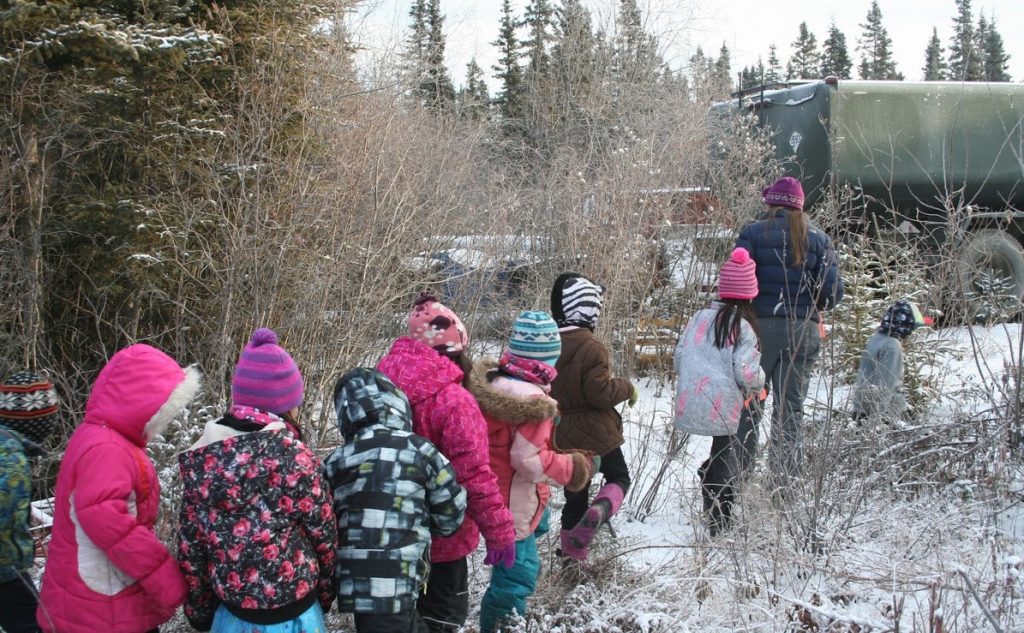
4-H informal STEM educators
Interests
4-H leaders are interested in using citizen science in their programs. Citizen science projects addressing natural resources, agriculture, and environmental quality are of greatest interest to 4-H leaders. These data suggest that GLOBE-based citizen science projects that are motivated by local climate change challenges are a well-justified approach for engaging 4-H groups.
Benefits sought
4-H leaders see citizen science related to climate change as a way to integrate national 4-H priorities into their clubs. Specifically, they seek a way to incorporate informal STEM learning, inquiry- and project-based learning, and civic engagement through citizen science projects.
Supports needed
Awareness of GLOBE among 4-H leaders appears to be low, at least among our pilot group, but interest in using GLOBE and GLOBE learning activities increased with even short exposure to the program. To address this need, we have begun outreach workshops at national 4-H events to increase 4-H leader awareness of GLOBE.
Training in citizen science and inquiry methods was identified as a chief concern for 4-H leaders who took the national survey. As a result, we have expanded the Arctic and Earth SIGNs project professional development course to include informal STEM educators.
4-H leaders also desire curriculum materials to help support the participation of their youth groups in citizen science projects. We are working with our 4-H Alaska partners to align curriculum materials with 4-H priority areas.
This audience also sought help in getting youth interested in citizen science projects. Our approach of having youth identify a local issue to design their GLOBE research around and linking it to a stewardship action project, and connecting youth to scientists through technology-rich interface, support this need.
Community members seeking to work with youth on climate change issues
Interests
Community members attending the Signs of the Land Camp were interested in learning more about climate change impacts on people’s daily lives and feedbacks in the region and around the world. They were very interested in actions or policies that could help mitigate these impacts or foster positive adaptation to them. These data support our notion that including action-oriented stewardship projects as a part of the learning cycle is valuable.
The interviews by Knapp et al. (2014) suggest that rural community members are quite interested in climate change education as an approach to improve the adaptive capacity of rural communities facing climate change impacts.
Both the intensive interview studies and the responses to our precursor activity indicate that this target audience is interested in providing a cultural context for learning that integrates climate change science with traditions and elders’ knowledge. This further supports our program model, which begins with listening to and learning from elders, and suggests it would be valuable across our diverse audiences.
Benefits sought
In the application essays, community members sought the benefits of dialogue across generations and communities and looked forward to opportunities to learn about climate change from elders and scientists. This points to the importance of including elders, scientists, and youth along with the adult target audiences during the Arctic and Earth SIGNs course activities and providing opportunity for unstructured dialogue.
This audience also indicated in all three data sources that they hoped participation in a program like ours would help youth feel more connected with their community and traditional knowledge and feel empowered to participate in environmental stewardship. Linking the development of a sense of belonging in the community to STEM learning is a responsive method for youth in rural Alaska. These insights support the Arctic and Earth SIGNs model of embedding STEM learning into locally motivated, problem-solving projects related to climate change to empower youth to impact the future of their community.
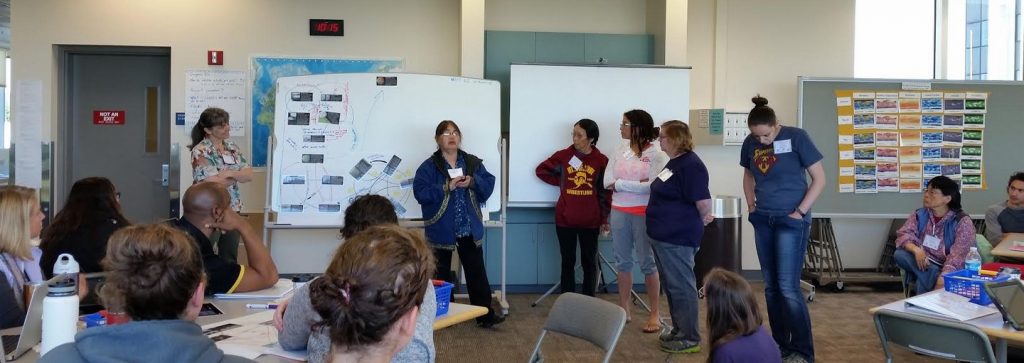
Supports needed
The rural and Indigenous community members interested in working on climate change issues with youth asked for training in climate change communication and science content. The inclusion of community members in our program workshop alongside teachers and informal educators has provided an opportunity to practice communicating science with the youth groups. More formal climate change communication should also be included in the professional development workshop.
The community leaders interviewed in the Jones and Skogrand (2015) study sought training for adults and older youth to mentor and assist younger children in outdoor, hands-on, meaningful projects outside of school hours. To address this, we have implemented a team approach to designing community projects, in which an educator (formal or informal) and a community member collaborate to work with youth.
Community members indicated that long-term, supportive relationships with program leaders and active follow-up communication were crucially important to the success of their participation in the program. We have implemented a program conference call that allows program participants to reconnect midyear, and we maintain open e-mail and phone communication with all the community teams. Communications range from equipment needs and support, to news of upcoming opportunities for students to share their research with the GLOBE international community. Community members also receive monthly GLOBE updates, and we are developing a program newsletter with updates from all of the participating teams.
Discussion
When we step back and look across all of the audiences, the following themes emerge across classroom teachers, informal educators, and Alaska Native community members. All of these factors have influenced our program design.
Make it personal, make it local, make it global
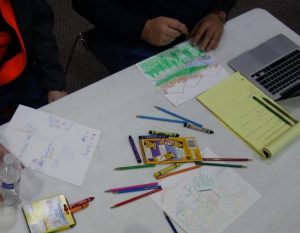
When designing a citizen science project, there are often trade-offs between meeting needs of the participants (e.g., learning, sense of contribution, empowerment, connection to local concerns) and producing a publishable data set that can address large-scale scientific questions, such as those surrounding climate change. Our results suggest that both needs are critically important across our audiences. Personally meaningful, locally relevant research experiences through global citizen science are a core desire for our target audiences. Our assessment also suggests that as we designed our training course for educators and community members, content had to emphasize personal and local climate change observations. Similarly, our curriculum support materials and student learning framework had to include activities that affirm youths’ personal connection to the community, their culture, climate change, and the future. Example activities that build on one another to establish personal, regional, and global connections to climate change are available online.
Teachers thought participation in large-scale data collection was important to offer youth a global perspective on climate change. Similarly, community leaders sought connection across communities within Alaska, but strongly advocated for action and deep engagement of youth at a local level. Connection to local and global concerns and data collection were also desired by 4-H leaders, for whom STEM and civic engagement are program priority areas. GLOBE offers opportunity for local concerns to be addressed using one of a wide variety of potential protocols, while also allowing for impact on a larger spatial and temporal scale by adding data to large-scale, long-term scientific investigations.
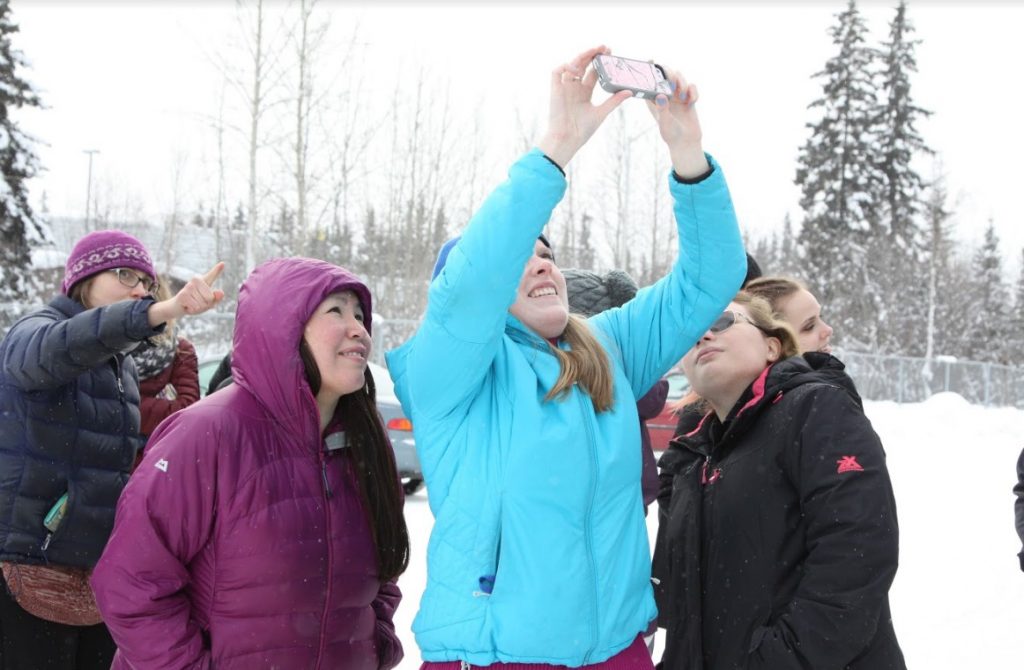
Increase inclusivity in citizen science training
Our needs assessment made us rethink how we were inviting participants to our workshop and the kinds of activities to include. Based on our assessment, we marketed and implemented the training not just as a science workshop, GLOBE protocol training, or culture camp, but also as an interdisciplinary, place-based course. An example of how we framed the course can be found in this video. In our first implementation year, we found that the number of applications increased from 13 in 2016 (when we marketed a “GLOBE training workshop”) to 30 in 2017 (when we marketed “Climate Change and My Community” using our needs assessment results). Our new marketing and program design was inclusive of multiple audiences and emphasized:
- the appeal of making a difference in the local community using your own research,
- collaborating with Alaska Native elders and NASA and Arctic scientists, and
- collecting data that contributes to a regional or global scientific study.
Through our partnership across Indigenous and Western science organizations, we recognized the limitations of using the term citizen science. The concept of “citizenship” can carry different meanings within the colonialization histories of Indigenous peoples across the globe. With over 229 federally recognized tribes in Alaska, we are increasingly using community science, a broader term that is helpful when working with sovereign tribes or those who are not citizens of the United States.
A desire to connect across community, cultures, and generations resonated in the needs assessment data. Due to high teacher turnover rates in rural Alaska, however, the long-term sustainability of citizen science projects initiated by K–12 teachers is a challenge. To address this, we required all participants in our first full program implementation year to apply for the course as a team of at least one formal or informal educator and one community leader or elder, and to include youth leaders when possible. We believe the impact of citizen science projects will be increased through this collaborative approach. Further, the individual and collective capacity to address climate change issues will also be increased through exchanging ideas across multiple knowledge systems and generations.
Integrate culture, traditional knowledge, and citizen science
As GLOBE expands to out-of-school settings, it faces the persistent challenge of engaging populations historically underrepresented in STEM fields (Pandya 2012). The limited engagement of marginalized groups in STEM has been attributed to a disconnection between scientific agendas and the priorities and needs of those communities (Pandya 2012; Soleri et al. 2016). Aligning citizen science engagement to each community’s climate change priorities and building collaborative in-school and out-of-school teams are first steps.
Our needs assessment suggests also that embedding culture and traditional knowledge from elders throughout the learning process is important to teachers and community members. First, the learning in the training workshop and the community should begin with the stories and observations of elders. Second, curriculum support materials should include local culture and traditions. In an effort led by the AINE, we are working to provide culturally responsive curriculum materials that focus on natural resources of cultural importance that align with local climate change impacts in Alaska (e.g., berries, medicinal plants, and fish and game species). For example, a community team can use these resources to deepen student understanding of the science and cultural importance behind a resource and how it could be influenced by climate change. Students could then design an investigation using GLOBE protocols.
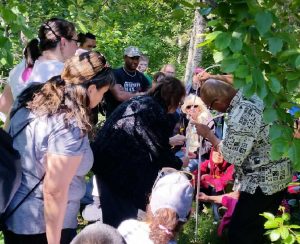
Connect across generations, cultures, communities, and the globe
We learned that our training course should include the participation of elders and scientists to support the learning of our target audiences. This could come in the form of field trips or collaborative activities during face-to-face courses or virtual, live field trips. Personal connections between youth and the elders and scientists were also desired across all the target audiences. To address this need, we reiterate the importance of starting the learning process for community teams with a visit with an elder who holds knowledge of how the land has changed. This should occur both during the training course and with youth in their communities.
As previously mentioned, we are holding “Meet-the-Scientist” sessions during which NASA or Arctic scientists connect to participants. We realize that not all educators or community members may have confidence in their ability to talk with a scientist or establish a digital videoconference connection. In our first full program workshop, we scaffolded the training to first establish personal connections between the workshop participants and the scientists present, then provided supports, such as guided notetaking graphic organizers to facilitate a discussion between youth and scientists. Only then did we show participants how to connect through videoconference. We are also sending scientists to villages to collaborate with youth and community members and launch their studies, as budget and time allow. We hope these visits will establish firmer connections and trusting, collaborative relationships between scientists, students, and the community.
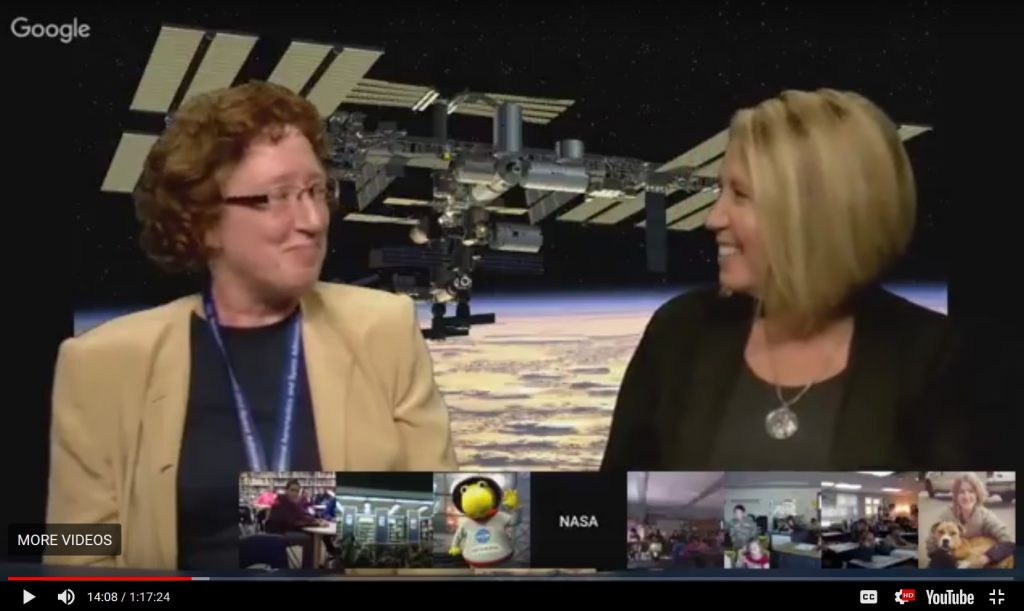
Toward a connected model for culturally responsive climate change citizen science
The audience needs described in this article are critical for facilitating climate change learning and problem solving in Alaskan communities. These audiences’ perspectives have informed the continued development of our citizen science–based, culturally responsive learning model, which builds on the elements of our prior programs mentioned earlier (Gordon, Stephens, and Sparrow 2005; Sparrow et al. 2006; Chase, Brunacini, and Sparrow 2016). Figure 1 shows how Arctic and Earth SIGNs integrates intimate interaction between community and school, collaborative identification of a focus issue across these audiences, and local climate change problem-solving or stewardship action projects.
Figure 1
Learning model to meet in-school and out-of-school audience needs and priorities on climate change learning and citizen science (modified from Stephens 2003 and OLCG 2002)
In the learning model, youth or adults first listen to an elder’s or another long-time community member’s observations of change and concerns for the community with regard to climate change. They then establish their own connection to climate change in their community through storytelling, mapping their own observations of change. Next, youth, adults, scientists, and community members collaborate to identify a focus issue for their climate change learning. They deepen their understanding of the topic using culturally responsive curricula and learning activities. They connect with NASA or Arctic scientists, then codevelop a GLOBE investigation related to an ongoing citizen science effort that could help address the climate change issue in their community. Teams analyze the data and archive it in the GLOBE international database. Youth then work with the adult community members to develop a stewardship or problem-solving project that allows them to take action and help their community using their new knowledge. They communicate their project results back to the elders, community leaders, scientists, the GLOBE community, or other larger audiences to further affect change and raise awareness on the climate change issue. An example and photos of this process are provided in Figure 2.
Figure 2
Example of the Arctic and Earth SIGNs Learning Model applied to climate change learning and citizen science in the remote Yup’ik village of Kwethluk, which is at the confluence of the Kuskokwim and Kwethluk rivers in the Yukon–Kuskokwim Delta.
2017 Climate Change and My Community
Community Project Implementation Example
Kwethluk, Alaska – Teacher Whitney Spiehler and Elder and Teacher Pauline Morris are working with the high school students in Kwethluk to address the rapid erosion in their community. Thawing permafrost and changes in river level have exacerbated the issue and many homes have had to be evacuated. They are taking GLOBE measurements of precipitation, temperature, and soil along with an assessment of water level, boat traffic, and erosion rate. They have used their data to propose policy solutions for their community including a “no wake” zone, and to help them design an alternative boat anchoring solution to help reduce the rate of erosion
Photo Credits: K. Spellman, L. Parkinson, E. Sparrow
Implementing the model
To implement this learning model in the community, our first cohort of teams was brought to the University of Alaska Fairbanks campus for the five-day Climate Change and My Community training workshop in June 2017. Using the data and insights from our needs assessment, we tried to provide the training and supports desired across our target audiences. We had 28 participants from 13 Alaskan communities. Thirty-three percent of participants were classroom teachers with less than five years in the community, 25% were long-term community members who also held teaching positions at the schools, 14% were 4-H or other informal educators, 14% were long-term community members, and 14% were youth. Present at the workshop were four Alaska Native elders, seven university scientists, and four youths who are active environmental leaders in their community or across the Arctic.
Our pre- and postworkshop evaluation data suggest these participants improved their confidence that they could implement this learning model with youth in their community (Table 3). When participants were asked to rank the value of each workshop activity (listed on our course website), all of the activities were rated highly. Among the most valued activities were listening to the elders (a mean score of 9.8 on a scale of 10), followed by insights shared by the youth (9.6) and the opportunity to spend time with scientists (9.4). These results show how important personal connections, intergenerational dialogue, and cross-knowledge system learning were to the workshop participants.
TABLE 3
Pre- and postworkshop results of teacher confidence in their ability to implement parts of the Arctic and Earth SIGNs learning model when they return to their communities. The sample analyzed includes only those participants who completed both pre- and postsurveys. These data were collected on a five-point Likert scale.
Once our first cohort of participants returned home, they tried to implement a project using our learning model. An example of these projects is provided in Figure 2. The success of these projects is evaluated according to a rubric we are working to develop with our evaluators that includes key indicators of effective engagement in community science. These indicators include elements such as:
- projects use or create partnerships with elders, scientists, and existing community organizations;
- projects are relevant to the community and respond to the needs of the educator, community, and youth; and
- project participants feel like they are making a valuable contribution to their community and to science.
Evidence these elements were met are currently being collected through surveys, interviews, participant observations, and document analysis.
Conclusion
We consider assessing the needs of K–12 classroom teachers, informal educators, and community members to be critical to developing and refining a learning model for in-school and out-of-school climate change learning. We have started testing this model and evaluating the effect on all audiences’ knowledge of climate change, scientific literacy, and capacity to address the pressing issues arising in a rapidly changing climate.
Acknowledgments
We thank C. Fabbri, D. Jones, C. Gho, M. Stewart, S. Via, M. Bacsujlaky, B. Murray, and K. Wegner for thoughtful and constructive conversation that led to this article. The Arctic and Earth SIGNs project is supported by NASA under Award No. NNX16AC52A. Any opinions, findings, and conclusions or recommendations expressed in this material are those of the authors and do not necessarily reflect the views of NASA. Primary project collaborators include the University of Alaska Fairbanks, the Association of Interior Native Educators, 4-H Alaska, the GLOBE Implementation Office, NASA’s Langley Research and Goddard Space Flight Centers, and the NASA Science Mission Directorate STEM Education Activation Collective.
Katie V. Spellman (klspellman@alaska.edu) is a research associate at the University of Alaska Fairbanks International Arctic Research Center in Fairbanks, Alaska. Elena B. Sparrow (ebsparrow@alaska.edu) is director of education and outreach at the University of Alaska Fairbanks International Arctic Research Center in Fairbanks, Alaska. Malinda J. Chase (malindac@apiai.org) is executive director at the Association of Interior Native Educators and tribal liaison at the Aleutians Pribilof Islands Association and the Alaska Climate Science Center, all in Fairbanks, Alaska. Angela Larson (ALarson@goldstreamgroup.com) is principal consultant at the Goldstream Group in Fairbanks, Alaska. Kelly Kealy (kkealy@goldstreamgroup.com) is evaluation consultant at the Goldstream Group in Fairbanks, Alaska.



